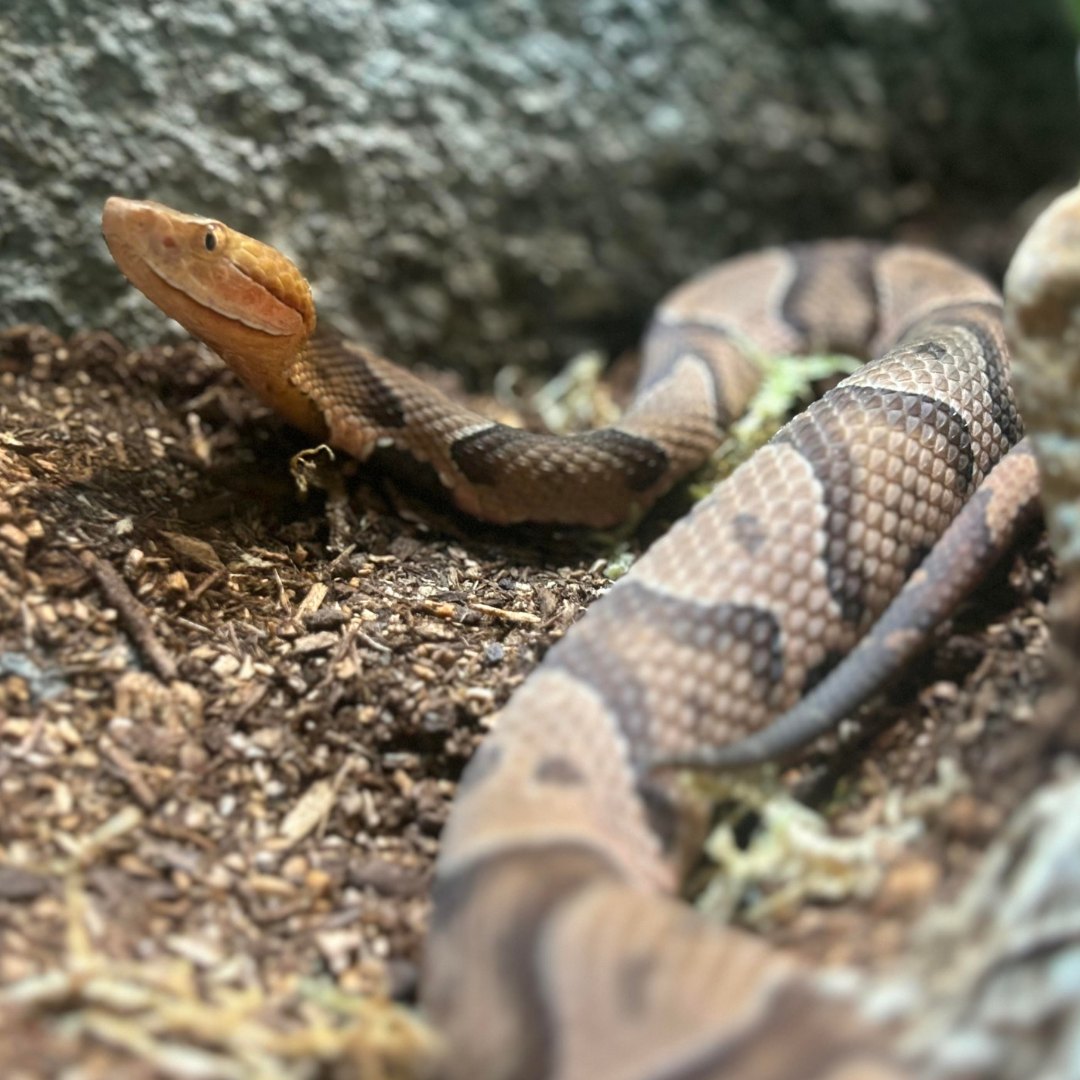- Copperhead Identification: Distinctive Patterns and Physical Characteristics
- Habitat and Behavior of Copperheads in North America
- The Role of Copperheads in the Ecosystem and Biodiversity
- Copperhead Venom: Composition and Effects on Humans
- Conservation Efforts and Human-Copperhead Interaction Prevention
Copperhead Identification: Distinctive Patterns and Physical Characteristics
Copperheads, a species of venomous snake native to North America, are often recognized by their unique appearance. Their distinguishing feature is the pattern on their backs, described as resembling a series of linked bowties or hourglasses. This striking design is not only visually captivating but also serves as one of the quickest ways to identify these snakes. Furthermore, their eyes, endowed with elliptical, cat-like pupils, provide a menacing yet fascinating glimpse into their predatory lifestyle.
These reptiles possess a triangular-shaped head, a common characteristic among venomous snakes, which serves as a warning signal to potential predators and humans alike. The copper shades that give copperheads their name are a blend of pale browns, tans, and ruddy hues, which acts as effective camouflage in forested areas covered with fallen leaves. This coloration not only aids in their survival by hiding them from predators but also assists them in ambushing prey. The sensory pits located between their eyes and nostrils are another hallmark of the species, enabling them to detect minute changes in temperature—a vital hunting adaptation.
Habitat and Behavior of Copperheads in North America
Copperheads are predominantly found in the eastern and central United States. They exhibit a preference for deciduous forests and rocky outcrops but are also frequently discovered in swamps, riverbeds, and near human habitations, such as in suburban areas with extensive garden spaces. This adaptability is a testament to their resilience and resourcefulness in various environments.
These snakes are active predominantly during the warmer months, which coincides with their breeding season in the spring and fall. Copperheads are solitary creatures, except during courtship or hibernation, where they may den or hibernate in communal spaces. Their diet consists mainly of rodents, frogs, and small birds, making them essential in controlling pest populations. Despite their venomous nature, copperheads are typically non-aggressive and tend to rely on their camouflage to avoid confrontation. When threatened, they may employ tactics such as tail vibration, which mimics the sound of a rattlesnake, a behavioral adaptation meant to deter predators without escalating conflict.
The Role of Copperheads in the Ecosystem and Biodiversity
Copperheads play a vital role in maintaining the health and balance of their ecosystems. As efficient predators, they help control the populations of small mammals and other prey species. This control is crucial in preventing overpopulation and the potential spread of zoonotic diseases. Their presence indicates a healthy, functioning ecosystem, underscoring the importance of their conservation.
Additionally, copperheads serve as prey for larger predators, such as hawks and other birds of prey. This intricate food web highlights their importance in the broader ecological community, illustrating how their survival impacts multiple levels of biodiversity. The loss of copperheads could result in a significant imbalance, leading to unforeseen consequences for other native species.
Copperhead Venom: Composition and Effects on Humans
Although copperheads are venomous, their venom is relatively mild compared to other North American pit vipers. The venom is hemotoxic, affecting blood cells and tissue near the site of the bite. While copperhead bites can be painful, they rarely result in fatalities. However, prompt medical attention is advised to manage pain and prevent complications.
The primary components of copperhead venom include enzymes that break down cell membranes and inhibit blood clotting. This biochemical makeup allows the snake to immobilize and pre-digest its prey. Interestingly, researchers are investigating the potential medical applications of this venom, as certain enzymes may hold pharmacological promise for developing new medications, particularly in treating clotting disorders and enhancing wound healing.
Conservation Efforts and Human-Copperhead Interaction Prevention
Conservation of copperhead populations is crucial, as habitat destruction and human encroachment continue to threaten their existence. Wildlife management strategies often focus on habitat preservation and public education to mitigate human-snake conflicts. By promoting awareness about the ecological benefits of copperheads, conservationists aim to foster coexistence and reduce unnecessary killing of these snakes.
Efforts also include developing protocols for urban planning that minimize habitat disruption and implementing community outreach programs that teach residents how to recognize, avoid, and safely manage encounters with copperheads. Encouraging responsible land use and implementing ecological corridors can aid in maintaining healthy populations and promoting genetic diversity within copperhead communities. Additionally, fostering partnerships between conservation organizations and local governments can enhance resources and support for these efforts, ensuring copperhead populations remain a thriving component of North America’s natural heritage.
*****
Source Description
The is on copperhead, Sorrel! Did you know that copperheads are always dressed for a formal occasion? One of the quickest ways to identify these venomous snakes is by the bowtie pattern on their backs. They also have cat-like pupils and a triangular-shaped head.


